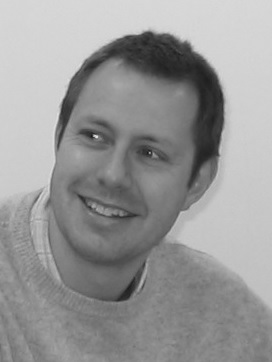International Seminar Series invites Dr. Nikolaj Gadegaard
29 November 2013
 |
|
Friday, November 29, 11:00
Seminarrom 3 B1.1017, Rikshospitalet
Nanotopographical control of stem cell fate: from discovery to translation
Nikolaj Gadegaard is currently Reader in Biomedical Engineering in the School of Engineering at University of Glasgow and is academic member of the Centre for Cell Engineering. After graduating with a BSc in chemistry and an MSc in Physics from University of Copenhagen, he took up a PhD position at Risø National Laboratory in 1999 on injection moulding of nanostructured material for cell control. In 2002 he was awarded his PhD in biophysics and moved to Glasgow as a post doc in the Centre for Cell Engineering. In 2003 he was awarded a Royal Society of Edinburgh Research Fellowship on biological interactions with nanostructured materials, followed by a lectureship in 2006.
His current research focuses on developing micro- and nanofabrication technologies and applying them to biological systems, in particular the use of electron beam lithography to make surface topographies with highly controlled geometrical arrangements. These have proven particularly important in stem cell research. To fuel the translational component of the research, his group has developed a number of technologies for injection moulding large quantities (>1000) of nanopatterned polymer samples. Recently we have started to make topographical arrays for high-content screening of cell-material interactions to widen to range of nanopatterns. The biological systems span from bacteria to embryonic and adult stem cells. Part of the group is currently developing multivariate models to link the specific biological response to the different nanopatterns.
He has published over 100 peer-reviewed papers on micro- and nanofabrication, surface analysis, and the use of such materials for biological applications.
Nanotopographical control of stem cell fate: from discovery to translation
Surface topography is well known to influence the fate of stem cells. There are many ways to generate topographies but electron beam lithography has proven particularly useful to make very specific patterns with only subtle changes in their geometry. Specifically we have shown that highly regular nanopatterns are capable of maintaining multipotency of mesenchymal stem cells in vitro. Thus this unique topography mimics the natural niche in which the cells normally reside. On the other hand, if a small amount of disordered is added to the pattern, without total disorder, the stem cells will specifically different onto bone forming cells (osteogenic). This delicate control can only be achieved by electron beam lithography. The master patterns are manufactured on semiconductor substrates which is not the ideal material for neither in vitro nor in vivo testing. To this end we apply a replication process into polymeric substrates by injection moulding. To accelerate the discovery of influential patterns, we have constructed a high-content screening platform where we systematically can design and fabricate 100s of different patterns. Traditionally, such array platforms are manufactured in a serial and discrete manner, however, we have developed an alternative manufacturing route where such arrays can be made in a single step. The platform is also compatible with our injection moulding process and thus can provide us with large quantities of samples. The process enables us to make fully patterned microscope slides in 15 sec and with an extremely high reproducibility between the parts. This high reproducibility and rapid manufacturing rate means it provides an ideal means for translation of our findings to medical devices. Hence we have demonstrated how our oestogenic nanopatterns can be incorporated in PEEK which is a common implant materials for intervertebral implants. Similarly we have developed a process whereby we can nanopattern arbitrary titanium surfaces with our discovered nanopatterns.
In summary, we will present a robust route from discovery to translation using nanopatterned substrates in regenerative medicine.
